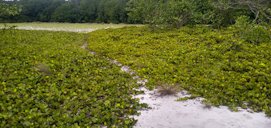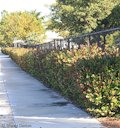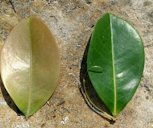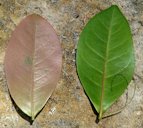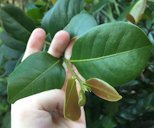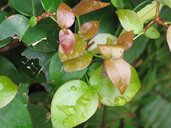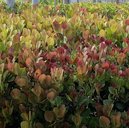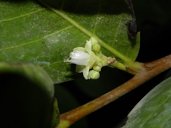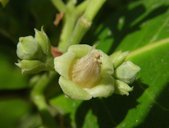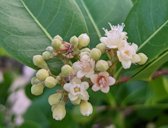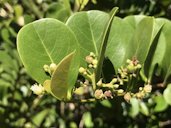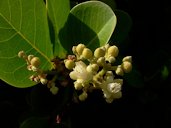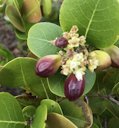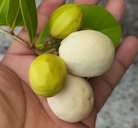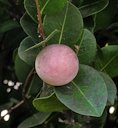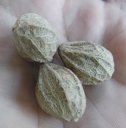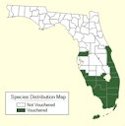| Cocoplum - Chrysobalanus icaco | |||||||||||||||||||||||||||||||||||||||
|---|---|---|---|---|---|---|---|---|---|---|---|---|---|---|---|---|---|---|---|---|---|---|---|---|---|---|---|---|---|---|---|---|---|---|---|---|---|---|---|
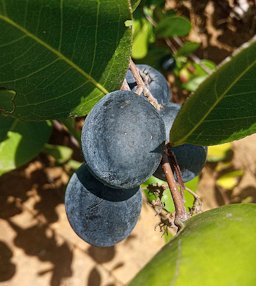 Fig. 1 Cocoplum, Chrysobalanus icaco 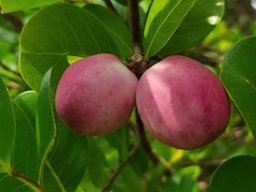 Fig. 2 Chrysobalanus icaco (Cocoplum), Palenque International Airport (PQM), Palenque, Chipas, Mexico 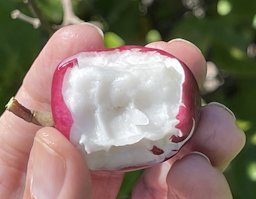 Fig. 3  C. icaco (Cocoplum), Bocas Del Toro, Panama 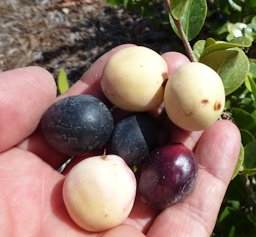 Fig. 4  C. icaco (Cocoplum), fruit leaves, Vitas Healthcare Delray Beach, Florida 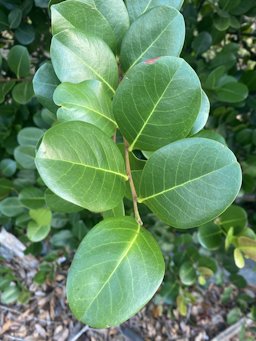 Fig. 7  C. icaco (Cocoplum), Port Saint Lucie, FL, US 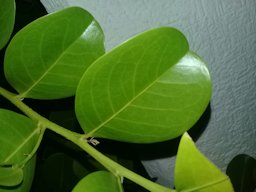 Fig. 8  C. icaco (Cocoplum), Benito Juárez, Q. R., México 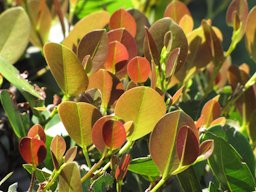 Fig. 9  C. icaco (Cocoplum), red leaves, Oakwood Lakes Boynton Beach, Florida 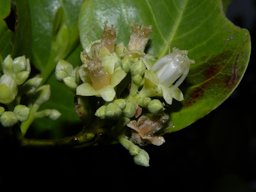 Fig. 16  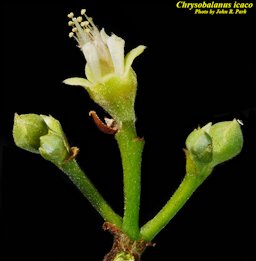 Fig. 17  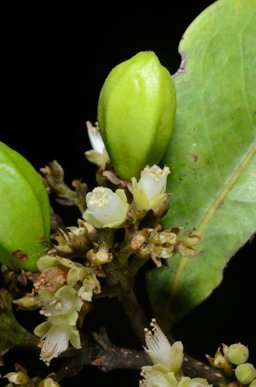 Fig. 18  C. icaco, Gabon, zone de Lambaréné 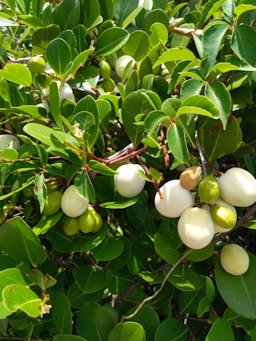 Fig. 25  Cocoplum, C. icaco, Anna Maria, FL, USA 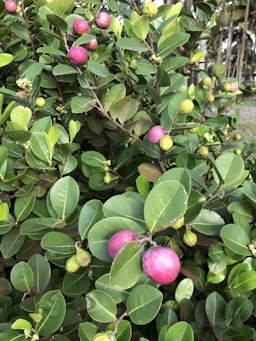 Fig. 26  C. icaco (Cocoplum), Isla Zapotal, Muisne, Provincia de Esmeraldas, Ecuador 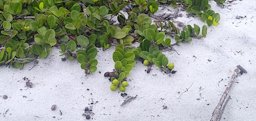 Fig. 27  Cocoplum, C. icaco, Etimboue, Gabon (fruit of the coastal ecotype) 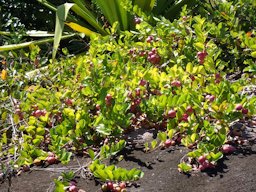 Fig. 28  C. icaco (Cocoplum), Morne Seychellois National Park, Anse Major Trail (Seychelles, Mahé) 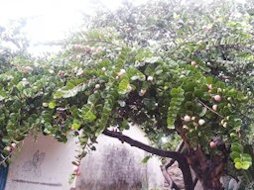 Fig. 33  C. icaco (Cocoplum), San Juan Cacahuatepec, Oaxaca, México 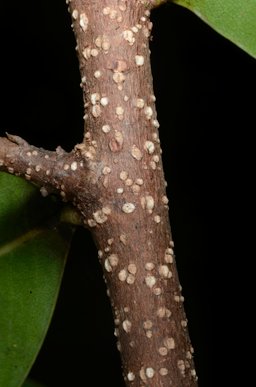 Fig. 34  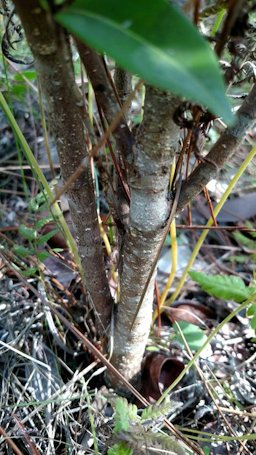 Fig. 35 C. icaco (Cocoplum), Naples, FL, USA 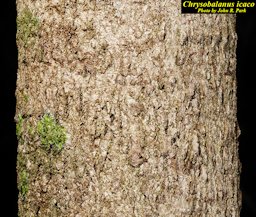 Fig. 36 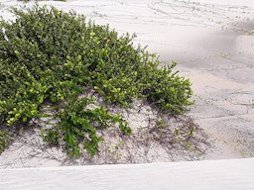 Fig. 37  Coastal ecotype of cocoplum 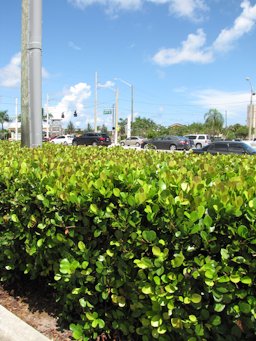 Fig. 38  Inland ecotype of cocoplum, hedge, Boynton Beach, Florida 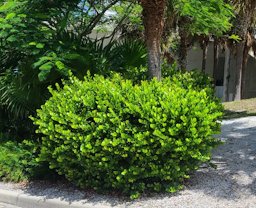 Fig. 39  Ernest "Doc" and Eloise Werlin Park, Sarasota, FL 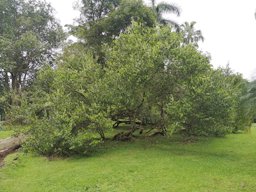 Fig. 40  C. icaco (Cocoplum), Ancón, Panamá 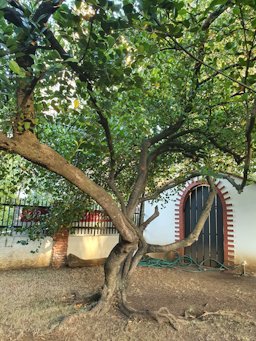 Fig. 41  C. icaco (Cocoplum), Santo Domingo, República Dominicana |
Scientific
name Chrysobalanus icaco L. Pronunciation crease-oh-BAL-ah-nus eye-KAY-koh 12 Common names English: cocoplum; pork fat apple; icaco; Brasil: guagiru; French: icacier, icaquier, prune colon; German: Gold-Pflaumenbaum, Ikako-Pflaumenbaum; Portuguese: Guajiru, Ajurú-branco; spanish: ticaco. hicaco, icaco; Swedish: icaco; Vietnam: mân du'à 6 Synonyms Chrysobalanus guianensis Klotzsch; C. icaco var. icaco; C. icaco var. pellocarpus (G.Mey.) Souza ; Prunus icaco Labat 5 Relatives Gopher apple (Licania michauxii), sunsapote (Licania platypus) 2 Family Chrysobalanaceae (cocoplum family) Origin Central and south Florida; West Indies; Mexico; Central America; northern South America; West Africa 1 USDA hardiness zones 10a‒12b 1 Uses Hedge; specimen; groundcover; roadway; small tree; edible fruits 1 Height Inland ecotype: 20 ft (6 m) Coastal ecotype: 6 ft (1.8 m) 1 Crown Dense rounded (Fig. 39,40) 2 Plant habit Inland ecotype: shrub; small tree 1 Coastal ecotype: ground cover 1 Growth rate Inland ecotype: fast Coastal ecotype: moderate 1 Longevity Long lived perennial Trunk/bark/branches Young stems and petioles are reddish brown; numerous/conspicuous pale lenticels (Fig. 34) 5 Pruning requirement Coastal ecotype can be maintained at 18-24 in. (45–60 cm) Inland ecotype hedge: maintained at 4-8 ft (1.2-2.5 m) 1 Leaves Evergreen; alternate; elliptic/ovate/obovate; entire leaf margin; angled upward 1,5 Flowers Complete, perfect; arranged in axillary (Fig. 25.) or terminal cymes with few flowers 5 Fruit Thin skinned drupe: white to pink or purple; white juicy sweet/insipid flesh; single edible stone 1,5 Season May-Aug.; some fruit sporadically throughout the year 2 Light requirement Full sun; moderate to light shade 1 Soil tolerances Acidic to alkaline; clay to sandy; seasonally saturated to seasonally dry 1 pH preference 6.6-8.4 1 Drought tolerance Medium 1 Salt tolerance Inland ecotype: not tolerant Coastal ecotype: high 1 Flood tolerance Established plants: high 1 Wind tolerance High 1 Cold tolerance Minor damage at 32 °F (0 °C); severe stem/leaves injury at 28 °F (-2 °C) 1 Plant spacing Hedge: 36-50 in. (81-127 cm) apart on center 1 Pest/disease resistance Lobate lac scale; weevils; algal leaf spots; Botryosphaeria canker 1 Invasive potential * Native Known hazard None Reading Material Cocoplum (Chrysobalanus icaco L.) Identification and Uses, University of Florida pdf Coco-Plums, Chrysobalanus icaco: Multi-Colored Fruit, Eat The Weeds Origin Tropical America, from Florida and Tamaulipas southward through the West Indies and Central America to northern Brazil and to Ecuador; tropical West Africa; near sea level, in beach thickets and coastal swamps; often planted inland. 6 Description The cocoplum is a native species that is widely planted as an ornamental hedge in south Florida. While the fruit is of only fair quality, it can be made into a unique jelly. The real treasure is the rich seed endocarp. The plant is not cold tolerant. However, it is drought tolerant and resilient. It is useful in seaside landscaping due to its salt tolerance. The cocoplum's versatility makes it a valuable addition to any south Florida garden. 2 Ecotypes Plant ecotypes or forms are populations that survive in isolation and develop minor but distinct characteristics in response to local environmental conditions, such as differences in growth habit, leaf shape or color, and flower and fruit size or color. There are two ecotypes of cocoplum as distinguished by their growth habits. 1 There is a coastal ecotype (Fig. 5,37) and an inland ecotype (Fig. 6,38) of cocoplum. The coastal ecotype of cocoplum is a shorter, spreading shrub. It grows at a moderate rate and does not usually exceed 6 feet tall. This ecotype can easily be kept 18-24 inches high with regular pruning. It makes an excellent groundcover and a good low hedge. Look for the cultivar 'Horizontal' to be sure you're selecting this coastal form. Rooting at the nodes as it spreads out over the soil surface, this cultivar hugs the ground so it is a good plant for dune stabilization and to help prevent erosion. 3 Cocoplum's inland ecotype can reach 15 to 25 feet tall if not pruned smaller. They can be pruned into hedges (Fig. 38) or allowed to sprawl into a dome-shaped shrub (Fig. 40). Cultivars of inland cocoplum include 'Red Tip' and 'Green Tip'. These two cultivars look roughly the same but display new growth in either red or green. 'Redtip' fruits are oblong and purple. 'Greentip' fruits are white or occasionally purple. 3
Fig. 5. C. icaco (Cocoplum), Etimboue, Gabon (coastal ecotype) Fig. 6. C. icaco (inland ecotype) Leaves The twigs are green and hairless when young and turn reddish brown with raised lenticels at maturity. The branches have two rows of shiny, dark-green, leathery, round or elliptic, alternate leaves 1-4 in. (3–10 cm) long by 1-2.75 in. (2.5–7 cm) broad, on a 0.1 in. (3 mm) petiole. The undersurfaces are light green. The simple leaves turn upward. 8 New leaves are coppery-pink in color and some, notably ‘Red Tip” have reddish new leaves. 3
Fig. 10,11. C. icaco (Cocoplum), Naples, FL 34110, USA Fig. 12. C. icaco (Cocoplum), Fern Forest Nature Center, Coconut Creek, FL, US Fig. 13. C. icaco (Cocoplum), Okeeheelee Park, West Palm Beach, FL, US Fig. 14. 'Red Tip' cocoplum, Puerto Rico, Caguas, PR, US Fig. 15. C. icaco (Cocoplum), young red leaves, Holiday Inn Express Boynton Beach, Florida Flowers Flowering is mostly from January to August, but the main flowering period is usually late spring. The flowers occur in rather inconspicuous, short, axillary, and terminal clusters called cymules (few-flowered, poorly branched inflorescences in which the central flower matures first). Each flower is perfect (with both male and female sexual organs). 1
Fig. 19. C. icaco (Chrysobalanaceae),Bahamas, Exuma Fig. 20. C. icaco (Cocoplum), Варадеро, Куба (Cuba) Fig. 21. C. icaco (Cocoplum), On The Beach South Water Caye, Belize Fig. 22. Cocoplum, Michigan St, Fort Pierce, FL, US Fig. 23. C. icaco (Cocoplum), Ambergris Caye, Belize Pollination Coco-plum flowers and has fruit nearly throughout the year. Bees may be the pollinator as the flowers are a good source of honey. 8 Fruit Fruiting is abundant from late spring through summer. Immature and mature fruit are often found on the same fruiting cluster. Immature fruit are green and become purple, white, or white-blushed pink when mature. They do not ripen when picked prematurely. 'Horizontal' fruit is white, white with pink blush, or (less often) purple. They are round, typically up to 1.5 inches in diameter. 'Red Tip' has oblong purple fruit. 'Green Tip' has white (or occasionally purple) oblong or rounded fruit. 1 Both inland cultivars have smaller drupes than their coastal counterpart, mostly 0.75 inches (2 cm) in diameter. 1
Fig. 29. C. icaco, Sint Maarten, Caribbean (unripe fruit) Fig. 30. C. icaco (Cocoplum), Municipio de Tulum, Q.R., México Fig. 31. C. icaco, Jupiter, FL 33478, USA Fig. 32. C. icaco (Cocoplum), Gaspar Hernandez, Dominican Republic Varieties 'Horizontal' is the cultivar synonymous with the coastal form of cocoplum. Its new leaves are light-green to yellow-green, and mature fruit are predominantly white, white blushed with pink, or (less often) purple. 1 'Red Tip' is a cultivar of the inland form of cocoplum. The color of the new leaf growth is burgundy-red, becoming yellowish-green and then dark-green. The mature fruit color is usually purple. 1 'Green Tip' have light-green new leaves that become dark-green. Mature fruit color is predominantly white and often blushed with pink. 1 Harvesting Fruit production peaks from May through August, although some plants fruit sporadically throughout the year. 2 Immature fruit are green and become purple, white, or white-blushed pink when mature. They do not ripen when picked prematurely. Mature fruit easily detach from the stem and fall below the plant or are removed by people or wildlife. 1 Propagation Cocoplum is usually propagated by stem cuttings. This ensures that the new plants will be of the same ecotype or cultivar as the parent. You can also propagate cocoplum by seed but the results are mixed. The offspring might not be "true to type" (identical to the parents) and the process is slower. 4 Cuttings will root quicker if started in the spring from non-flowering and non-fruiting stems. 1 Planting Both ecotypes and all cultivars can be cultivated on both coastal and inland sites. Soil tests done by Lee County Extension have found naturally occurring cocoplum growing in soil with a pH range of 6.6 to 8.4. Established plants have a high flooding tolerance, and many grow along fresh water canals and in soils seasonally inundated for several weeks by fresh water. 1 Pruning Required to maintain each ecotype to the height desired, as a hedge or groundcover. Fertilizing Cocoplum's nutritional requirement is low. However, young plants grow faster with adequate fertilization. Once a plant reaches four or more feet tall in a hedge row of the inland ecotype, fertilization is rarely (if ever) needed. 1 Pests Lobate lac scales (Paratachdina pseudolobata) and the accompanying sooty mold deposits on leaves and stem are sometime seen. The little leaf notcher (Artipus floridanus) makes shallow notches along the leaf blades sometimes so uniform that they appear to be natural leaf serration rather than feeding damage. The Sri Lanka weevil (Myllocerus undecimpustulatus undatus) chews both shallow and deep notches along the leaf margins. The feeding pattern is very noticeable. 1 Diseases Algal leaf spot (Cephaleuros virescens) and Botryosphaeria (Botryosphaeria sp.) canker and blight may occur. 1 Food Uses The sweet fresh fruits, although somewhat insipid, are eaten out of hand. They do sometimes cause an astringent taste in the mouth. The fruits are commonly stewed with sugar or made into jam. They were one of the most important fruits used by early European settlers in coastal areas of Florida. In Cuba the boiled fruits are made into a sweet preserve and eaten as dessert. The seeds can be roasted as nuts. 9 The seeds are about the size of a pistachio and taste like a roasted almond. 11 The large kernel removed from its shell is edible raw or cooked. Some think it has the faint flavor of almond. To me it tastes like granola. Green Deane. 12 Nutrient Content A 100 g fruit portion contains 86.3 g water, 47 kcal, 0.4 g protein, 0.1 g lipid, 12.4 g carbohydrate, 1 g fibre, 0.8 g ash, 38 mg calcium, 0.6 mg iron, 17 mg phosphorus, 9 mg ascorbic acid, 0.04 mg thiamine, 0.03 mg riboflavin, 0.3 mg niacin, trace vitamin A. 8 Medicinal Properties ** The root, bark, fruit and leaves all contain tannins and are astringent. They are used internally in the treatment of diarrhoea, dysentery and dyspepsia. They are used externally as a wash to treat skin complaints. 7 Other Uses The plant often forms large, rambling, impenetrable thickets and so it has been used to stabilize sand dunes. 7 The oil in the kernel can be substituted for almond oil. The seed is about 21% oil by weight. In fact, the seeds can be strung on sticks and burned like a candle. 12 The oil can also be used to make candles, soap, and axle grease. The kernels (and leaves) can also be used to make a black dye that helps fibers resist decay. 12 General Provides significant food and cover for wildlife. Flowers attract butterflies, bees, beetles, and wasp pollinators. Squirrels eat the fruit. While the fruits are too large for most birds, cardinals, grackles, jays and red-bellied woodpeckers eat them in bites. They host a wide variety of insects that, in turn, provide food for insect-eating birds. 10
Fig. 42. Cocoplum distribution map, wild population List of Growers and Vendors |
||||||||||||||||||||||||||||||||||||||
| Bibliography 1 Brown, Stephen H., and Marc S. Frank. "Cocoplum (Chrysobalanus icaco L.) Identification and Uses." Environmental Horticulture Dept., UF/IFAS Extension, Original pub. Mar. 2018, AskIFAS, edis.ifas.ufl.edu/publication/EP553. Accessed 25 July 2023. 2 Boning, Charles R. Florida's Best Fruiting Plants- Native and Exotic Trees, Shrubs, and Vines. Sarasota, Pineapple Press, 2006. 3 "Cuckoo for cocoplums." UF/IFAS, Charlotte County Extension, 7 May 2016, charlottecountyextension.blogspot.com/2016/05/cuckoo-for-cocoplums.html. Accessed 25 July 2023. 4 "Cocoplum." Gardening Solutions, UF/IFAS, gardeningsolutions.ifas.ufl.edu/plants/trees-and-shrubs/shrubs/cocoplum.html. Accessed 25 July 2023. 5 "Chrysobalanus icaco L." World Flora Online, WFO (2023), www.worldfloraonline.org/taxon/wfo-0000830291. Accessed 27 Jul 2023. 6 "Taxon: Chrysobalanus icaco L. " USDA, Agricultural Research Service, U.S. National Plant Germplasm System, GRIN-Global, npgsweb.ars-grin.gov/gringlobal/taxonomydetail.aspx?id=10397. Accessed 27 Jul 2023. 7 Barwick, Margaret. Tropical & Subtropical Trees. A Worldwide Encyclopaedic Guide. London, 2004. 8 The Encyclopedia of Fruit & Nuts. Edited by Jules Janick and Robert E. Paull, Cambridge, CABI, 2008. 9 Blancke, Rolf. Tropical Fruits and Other Edible Plants of the World: An Illustrated Guide. China, Comstock Publishing Associates, a division of Cornell University Press, 2016. 10 Gann G. D., and Collaborators. "Coco-plum, Chrysobalanus icaco, Chrysobalanaceae." Natives For Your Neighborhood, The Institute for Regional Conservation, Delray Beach, Florida, 2005-2023, NFYN, www.regionalconservation.org/beta/nfyn/plantdetail.asp?tx=Chryicac&tx=Chryicac. Accessed 3 Aug. 2023. 11 "Cocoplum Jam." Living Roots, livingrootsecodesign.com/preserving-food/cocoplum-jam/. Accessed 3 Aug. 2023. 12 Deane, Green. "Coco-Plum, Chrysobalanus icaco: Multi-Colored Fruit." Eat the Weeds and other things, too, www.eattheweeds.com/chrysobalanus-icaco-multi-colored-fruit-2/. Accessed 3 Aug. 2023. Photographs Fig. 1 Filo gèn'. "Cocoplum, icaque (French)." Wikimedia Commons, 18 May 2020, (CC BY-SA 4.0), GFDL, commons.wikimedia.org/wiki/File:Chrysobalanus_icaco_-_Fruits_02.jpg. Accessed 28 July 2023. Fig. 2 Olvera, Julián. "Cocoplum, Chrysobalanus icaco, Isla Zapotal, Muisne, Provincia de Esmeraldas, EC." iNaturalist, Research Grade, 23 Nov. 2021, (CC BY-SA 4.0), www.inaturalist.org/observations/101793709. Accessed 31 July 2023. Fig. 3 Kaufmann, Karl. "Cocoplum, Chrysobalanus icaco, Bocas Del Toro, Panama." iNaturalist, Research Grade, 4 Nov. 2021, (CC BY-SA 4.0), Image cropped, www.inaturalist.org/observations/100264588. Accessed 31 July 2023. Fig. 4 Starr, Forest, and Kim. "Chrysobalanus icaco (Cocoplum), Fruit leaves, Vitas Healthcare Delray Beach, Florida." Starr Environmental, 160718-0265, 18 July 2016, (CC BY 4.0), Image cropped, www.starrenvironmental.com/images/image/?q=29377495280. Accessed 27 July 2023. Fig. 5 Helme, Nick. "Cocoplum, Chrysobalanus icaco, Etimboue, Gabon." iNaturalist, Research Grade, 26 Oct. 2022, (CC BY-SA 4.0), www.inaturalist.org/photos/239670675. Accessed 28 July 2023. Fig. 6 Denton, Shirley. "Chrysobalanus icaco, Coco Plum, Cocoplum." Florida Native Plant Society, www.fnps.org/plant/chrysobalanus-icaco. Accessed 3 Aug. 2023. Fig. 7 tsergi2021. "Cocoplum, Chrysobalanus icaco, Port Saint Lucie, FL, US." iNaturalist, Research Grade, 26 Nov. 2022, (CC BY-SA 4.0), www.inaturalist.org/observations/142963516. Accessed 31 July 2023. Fig. 8 keylaroman. "Cocoplum, Chrysobalanus icaco, Benito Juárez, Q.R., México." iNaturalist, Research Grade, 22 Nov. 2019, (CC BY-SA 4.0), www.inaturalist.org/observations/35965834. Accessed 31 July 2023. Fig. 9 Starr, Forest, and Kim. "Chrysobalanus icaco (Cocoplum), Red leaves, Oakwood Lakes Boynton Beach, Florida." Starr Environmental, 090922-5232, 22 Sept. 2009, (CC BY 4.0), www.starrenvironmental.com/images/image/?q=24947418376. Accessed 27 July 2023. Fig. 10,11,35 daniel_shelley. "Cocoplum, Chrysobalanus icaco, Naples, FL 34110, USA." iNaturalist, Research Grade, 24 Oct. 2019, (CC BY-SA 4.0), Images cropped, www.inaturalist.org/observations/34833368. Accessed 31 July 2023. Fig. 12 Fortnash, Jade. "Cocoplum, Chrysobalanus icaco, Etimboue, Gabon." iNaturalist, Research Grade, 25 Jan. 2020, (CC0 1.0), Image cropped, www.inaturalist.org/observations/37964842. Accessed 1 Aug. 2023. Fig. 13 bella_h2112. "Cocoplum, Chrysobalanus icaco, Okeeheelee Park, West Palm Beach, FL, US." iNaturalist, Research Grade, 20 Nov. 2022, (CC BY-SA 4.0), www.inaturalist.org/observations/142478432. Accessed 1 Aug. 2023. Fig. 14 Starr, Forest, and Kim. "Chrysobalanus icaco (Cocoplum), Young red leaves, Holiday Inn Express Boynton Beach, Florida." Starr Environmental, 090923-5354, 23 Sept. 2009, (CC BY 4.0), www.starrenvironmental.com/images/image/?q=24973956835. Accessed 27 July 2023. Fig. 15 elrivera. "Cocoplum, Chrysobalanus icaco, Puerto Rico, Caguas, PR, US." iNaturalist, Research Grade, 16 Apr. 2020, (CC BY-SA 4.0), www.inaturalist.org/observations/32769819. Accessed 31 July 2023. Fig. 16 Aguilar, Reinaldo. "Chrysobalanus icaco." Tropicos.org, Missouri Botanical Garden, United States, Missouri, no. 101421281, Tropicos®, (CC-BY-NC-SA), www.tropicos.org/Image/101421281. Accessed 27 July 2023. Fig. 17,36 Park, John R. "Chrysobalanus icaco L." Institute for Systematic Botany, University of South Florida, Tampa, S. M. Landry and K. N. Campbell (application development), USF Water Institute, 2023, Atlas of Florida Plants, florida.plantatlas.usf.edu/photo.aspx?ID=490. Accessed 31 July 2023. Fig. 18 Bidault, Ehoarn. "Chrysobalanus icaco, Gabon: Zone de Lambaréné." Tropicos.org, Missouri Botanical Garden, United States, Missouri, no. 100287933, Tropicos®, 26 Nov. 2013, (CC-BY-NC-SA), www.tropicos.org/Image/100287933. Accessed 27 July 2023. Fig. 19 Aguilar, Reinaldo. "Chrysobalanus icaco." Vascular Plants of the Osa Peninsula, Costa Rica, 5 May 2012, (CC BY-NC-SA 2.0), Flickr, www.flickr.com/photos/plantaspeninsulaosa/6998755490. Accessed 27 July 2023. Fig. 20 Howard, Richard A. "Chrysobalanus icaco (Chrysobalanaceae), Bahamas, Exuma." Smithsonian Institution, US National Herbarium, Botany Collection, NMNH, collections.nmnh.si.edu/search/botany/?ti=7. Accessed 27 Jul 2023. Fig. 21 Nuraliev, Maxim. "Cocoplum, Chrysobalanus icaco, Варадеро, Куба (Cuba)." iNaturalist, Research Grade, 22 Jan. 2020, (CC BY-SA 4.0), Image cropped, www.inaturalist.org/observations/37851759. Accessed 31 July 2023. Fig. 22 Nathan. "Cocoplum, Chrysobalanus icaco, On The Beach South Water Caye, Belize." iNaturalist, Research Grade, 27 Apr. 2022, (CC BY-SA 4.0), Image cropped, www.inaturalist.org/observations/113173620. Accessed 31 July 2023. Fig. 23 Hofling, H. M. "Cocoplum, Chrysobalanus icaco, Michigan St, Fort Pierce, FL, US." iNaturalist, Research Grade, 3 Dec. 2019, (CC BY-SA 4.0), www.inaturalist.org/observations/36322439. Accessed 31 July 2023. Fig. 24 wirich. "Cocoplum, Chrysobalanus icaco, Ambergris Caye, Belize." iNaturalist, Research Grade, 13 Apr. 2021, (CC BY-SA 4.0), www.inaturalist.org/observations/73846516. Accessed 1 Aug. 2023. Fig. 25 Long, Steven H. "Cocoplum, Chrysobalanus icaco, Anna Maria, FL, USA." iNaturalist, Research Grade, 16 July 2023, (CC BY-SA 4.0), www.inaturalist.org/observations/173261602. Accessed 28 July 2023. Fig. 26 Søndergaard, Skjold. "Cocoplum, Chrysobalanus icaco, Isla Zapotal, Muisne, Provincia de Esmeraldas, EC." iNaturalist, Research Grade, 23 Nov. 2021, (CC BY-SA 4.0), www.inaturalist.org/observations/101793709. Accessed 31 July 2023. Fig. 27 Helme, Nick. "Cocoplum, Chrysobalanus icaco, Etimboue, Gabon." iNaturalist, Research Grade, 26 Oct. 2022, (CC BY-SA 4.0), www.inaturalist.org/observations/140052160. Accessed 1 Aug. 2023. Fig. 28 Leon, Yolanda M. "Cocoplum, Chrysobalanus icaco, Morne Seychellois National Park, Anse Major Trail (Seychelles, Mahé)." iNaturalist, Research Grade, 7 Dec. 2021, (CC BY-SA 4.0), www.inaturalist.org/observations/102658929. Accessed 31 July 2023. Fig. 29 greensxm. "Cocoplum, Chrysobalanus icaco, Sint Maarten, Caribbean." iNaturalist, Research Grade, 20 Feb. 2020, (CC BY-SA 4.0), www.inaturalist.org/observations/39250029. Accessed 31 July 2023. Fig. 30 López, Ing. Forestal Carmen Angeles. "Cocoplum, Chrysobalanus icaco, Municipio de Tulum, Q. R., México." iNaturalist, Research Grade, 13 Nov. 2022, (CC BY-SA 4.0), Image cropped, www.inaturalist.org/observations/141946674. Accessed 31 July 2023. Fig. 31 Davis, Scott Allen. "Cocoplum, Chrysobalanus icaco, Jupiter, FL 33478, USA." iNaturalist, Research Grade, 21 Sept. 2019, (CC BY-SA 4.0), Image cropped, www.inaturalist.org/observations/33127814. Accessed 1 Aug. 2023. Fig. 32 Reith, Martin. "Cocoplum, Chrysobalanus icaco, Gaspar Hernandez, Dominican Republic." iNaturalist, Research Grade, 8 Dec. 2019, (CC BY-SA 4.0), Image cropped, www.inaturalist.org/observations/36476962. Accessed 31 July 2023. Fig. 33 Celis, Pedro. "Cocoplum, Chrysobalanus icaco, San Juan Cacahuatepec, Oax., México." iNaturalist, Research Grade, 4 Aug. 2020, (CC BY-SA 4.0), www.inaturalist.org/observations/55410224. Accessed 31 July 2023. Fig. 34 Bidault, Ehoarn. "Chrysobalanus icaco, Gabon: Zone de Lambaréné." Tropicos.org, Missouri Botanical Garden, United States, Missouri, no. 100287934, Tropicos®, 26 Nov. 2013, (CC-BY-NC-SA), www.tropicos.org/Image/100287934. Accessed 27 July 2023. Fig. 37 Silva, Maria Zenilde M. "Arbusto silvestre, Chrysobalanus icaco, encontrado no Nordeste do Brasil,em região salgada." Wikimedia Commons, 29 Jan. 2019, (CC BY-SA 4.0), commons.wikimedia.org/wiki/File:Arbusto_silvestre_Guajiru_Chrysobalanus_icaco_L.jpg. Accessed 28 July 2023. Fig. 38 Starr, Forest, and Kim. "Chrysobalanus icaco (Cocoplum), Hedge, Boynton Beach, Florida." Starr Environmental, 090922-5201, 18 July 2016, (CC BY 4.0), www.starrenvironmental.com/images/image/?q=24880362741. Accessed 27 July 2023. Fig. 39 Robitaille, Liette. "Ernest "Doc" and Eloise Werlin Park, Sarasota, FL." 29 July 2023, www.growables.org. Fig. 40 maricruz02. "Cocoplum, Chrysobalanus icaco, Ancón, Panamá." iNaturalist, Research Grade, 15 Sept. 2019, (CC BY-SA 4.0), Image cropped, www.inaturalist.org/observations/32769819. Accessed 31 July 2023. Fig. 41 Leon, Yolanda M. "Cocoplum, Chrysobalanus icaco, Santo Domingo, República Dominicana." iNaturalist, Research Grade, 14 Feb. 2021, (CC BY-SA 4.0), www.inaturalist.org/observations/69593137. Accessed 31 July 2023. Fig. 42 Wunderlin, R. P., et al. "Chrysobalanus icaco L." Institute for Systematic Botany, University of South Florida, Tampa, S. M. Landry and K. N. Campbell (application development), USF Water Institute, 2023, Atlas of Florida Plants, florida.plantatlas.usf.edu/Plant.aspx?id=2765. Accessed 31 July 2023. * UF/IFAS Assessment of Non-native Plants in Florida's Natural Areas ** Information provided is not intended to be used as a guide for treatment of medical conditions. Published 8 Aug. 2023 LR |
|||||||||||||||||||||||||||||||||||||||
